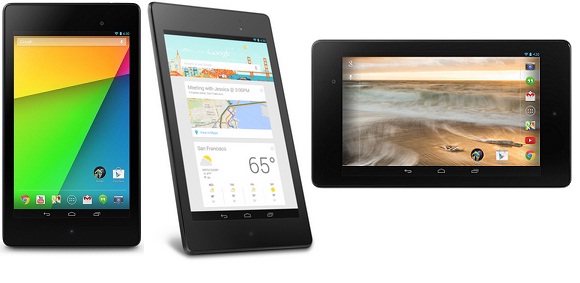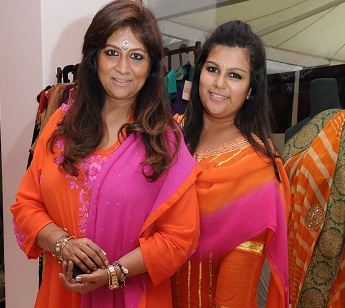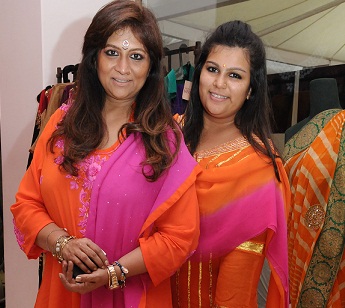The Google Asus Nexus 7
Oct 11, 2019, 11 36 | Updated: Oct 11, 2019, 11 36
Google has entered the tablet market and as expected, has already created a buzz around their Android-based Asus Nexus 7.
The Google Asus Nexus 7 has a 7 inch IPS LCD screen and carries a resolution of 800 x 1280 pixels (720p). Processing power comes from a Tegra 3 chipset: quad-core 1.2GHz ARM Cortex-A9 processor. Which means you can use the device a great deal more than other tablets in terms of multi-tasking and it is not likely to hang or face any time lag whatsoever. It also comes with 1GB of RAM on-board. Photography enthusiasts will feel a little disappointed because the Nexus 7 comes with just a 1.2 Megapixel front camera. You read that right. There is no camera at the back and the front camera can only be used for video-calling. There is no camera app for you to click photos or shoot video. There are 2 storage options – 8 & 16 GB. However, The Nexus 7 doesn’t offer any expandable storage options. But if you’ve owned an iPhone, iPad, Nexus 4 or HTC One, you won’t be stranger to fixed storage.
The 3G version of the Nexus 7 offers only data services which means you cannot use it to make a call (Unless, of course you use Skype or any such app). Now, despite these notable omissions, the Nexus 7 is very useful.
Design and Construct
The Asus Nexus 7’s screen is made out of Corning’s Gorilla Glass which gives it strength and rigidity. The back of the device, though made of Plastic has a rubbery finish which makes gripping it easier. The finish is far better than what the Galaxy line-up of tablets that Samsung has to offer. The chamfered finish is evident with a silver metallic stripe running around the device. One clever touch that the designers gave was to place the loudspeaker grill on the outside edge of the Tablet, near the bottom. This means the loudspeaker sound is audible even when the Tablet is placed on a flat surface. The large bevel that this device possesses makes it look larger than it really is. Infact the gap between the screen and edge of the Tablet at the top and the bottom is rather big. The positioning of the power button could be better.
Overall, the design and build quality is good. It doesn’t feel cheap or too ‘plasticky’. It’s not heavy and one should be able to use it comfortably without experiencing any strain.
Screen
The device has an LED backlit IPS LCD display. The HD resolution makes watching videos, playing games and viewing photos a good experience. Colors are bright and not oversaturated like AMOLED displays. Sunlight legibility is slightly below parand viewing angles aren’t the best but these aren’t deal-breakers. The screen can be a fingerprint magnet so you would need to wipe it with a soft cloth to keep it smudge free.
User Interface
This device comes with the latest version of Android 4.2 onboard (through updates) and provides the stock Android experience. There are no layers or skins on top of the standard Android interface. The result – Almost zero lag and a smooth UI experience. This is Android as it was meant to be. No bells and whistles but everything just works brilliantly. Obviously you have the full suite of Google apps to choose from and the default browser you get is Chrome. One feels that the Nexus range is the best to experience Android’s ‘Project Butter’ and the Nexus 7 is no exception.
Photos, Videos and Music
The gallery view on the Asus Nexus 7 comprises of a grid view of all your photos and albums. It isn't the prettiest interface but it covers all the basics and one would find it easy to navigate. An option called ‘Make available offline’ downloads all your photos from Picasa so that you can view them offline. This is especially useful in the Wi-Fi version.
The Video player leaves a lot to be desired. While the player itself is reasonably functional, codec support is limited. However, with Android phones there are always third-party apps that you could use, unless a feature is hardware-dependent. It’s sometimes good to get features out of the Box, though.
Music: Audio is not the greatest strength of the Nexus 7. Volume levels are average with the headphones plugged in but isn’t too bad with an external amplifier. There is some amount of distortion in both the headphones and external amplifier output. Upgrading this device to the upcoming (leaked but unreleased yet) Android 4.3 may make a slight difference to the output.
Battery Life
The battery life of the Nexus 7 is good. With some heavy usage, it runs for 9-10 hours. The 4325 mAh non-removable battery which does duty on this device was up to the task.
Connectivity Options
Apart from 3G and Wi-Fi, the device also gets NFC, Bluetooth v3. Wi-Fi Hotspot (you can share your device’s internet connection using Wi-Fi Hotspot) and microUSB v2 support. Wi-Fi connections are snappy and take no more than a few seconds. Bluetooth headsets work as a charm. There are no issues with connectivity issues.
Browsing, Apps and Gaming
This is an area where the Asus Nexus 7 comes into its own. With a Tegra 3 processor at its heart, the device is able to handle highly demanding processing needs. Browsing is seamless and you are likely to find yourself reaching out for it ahead of other devices. The 7 inch real estate really adds to the experience. The onboard Chrome browser does the job pretty well. As this review was being written, a new Tablet-friendly interface for Chrome was released. This should add to the experience of web browsing on a Nexus 7.
Gaming too was a pleasure on the Nexus 7. There is hardly any lag or dropped frames. Gameplay was smooth and graphics were of good quality.
Pricing
The Asus Nexus 7 is fast, simple and well priced at INR 15,999 for the 16GB version (however, you can buy it on Flipkart for just INR 9,999). Keep in mind that the HD resolution display and quad-core processor are a real value-add for the price. Over the past several months Google has sold several units of this device and just couldn't keep up with demand initially. Explocity spoke to a number of electronic retail outlets in Bangalore and most of the attendants said that they were "out of stock", but that they could get the devices if customers were to "pre-order".
The Nexus 7 is said to have been designed for the Play Store content. This means Google is trying to encourage users to stream content from the Play Store and not store it. This should probably explain the limited onboard memory.
The Asus Nexus 7 does have its share of competition. What sets it apart is its simplicity, pure Google experience, good design and processor.
Picture Source: Google Nexus 7 website.







